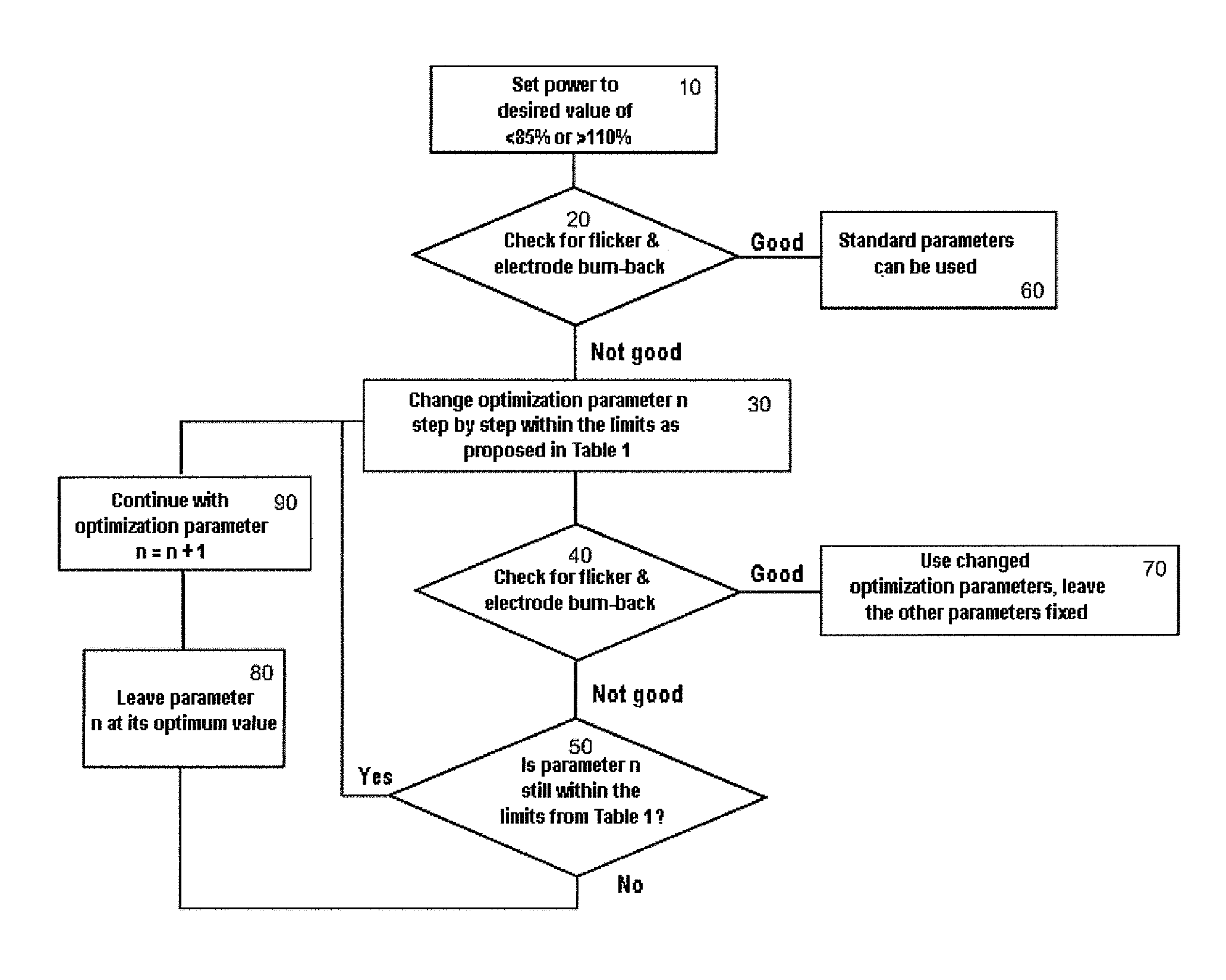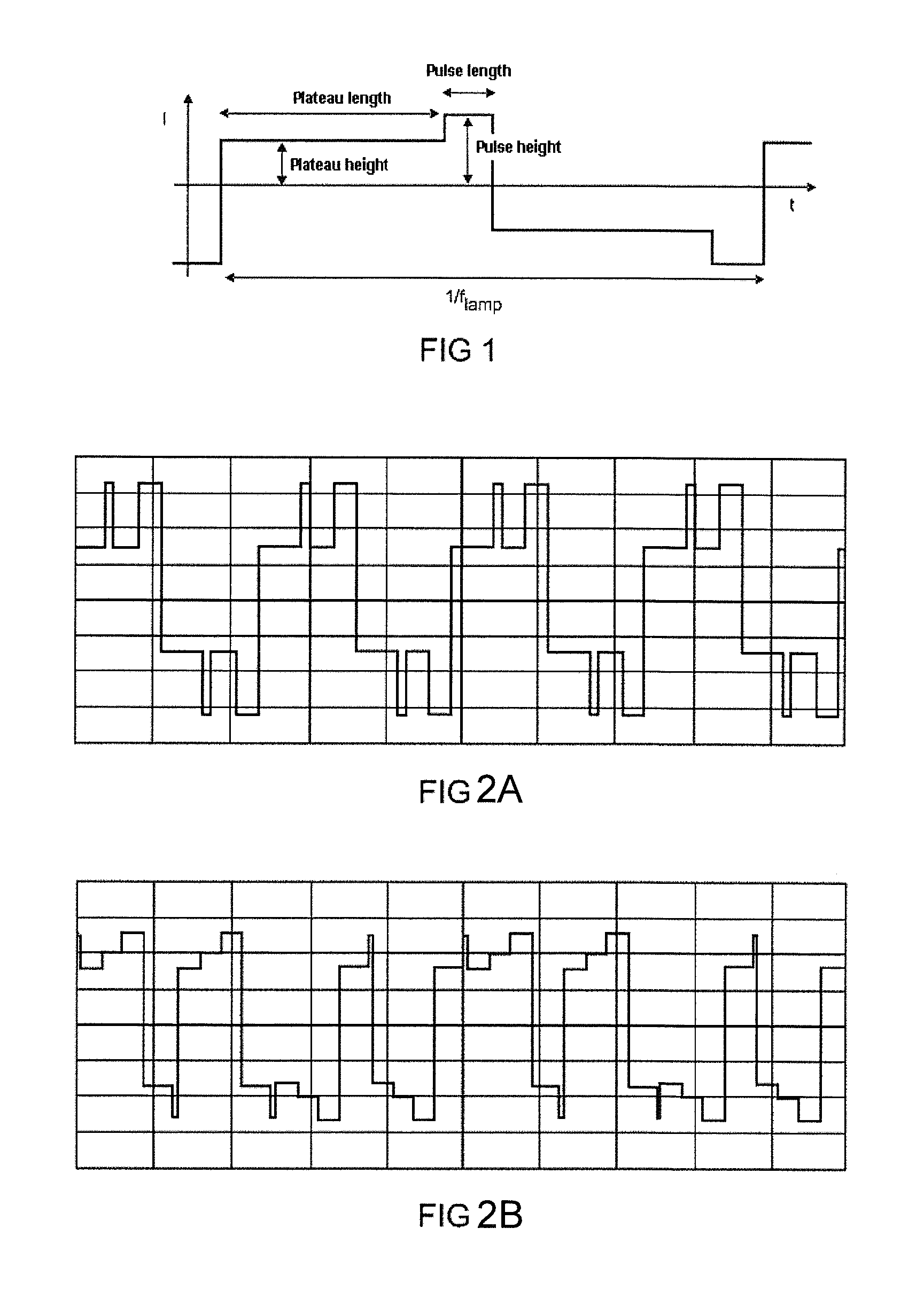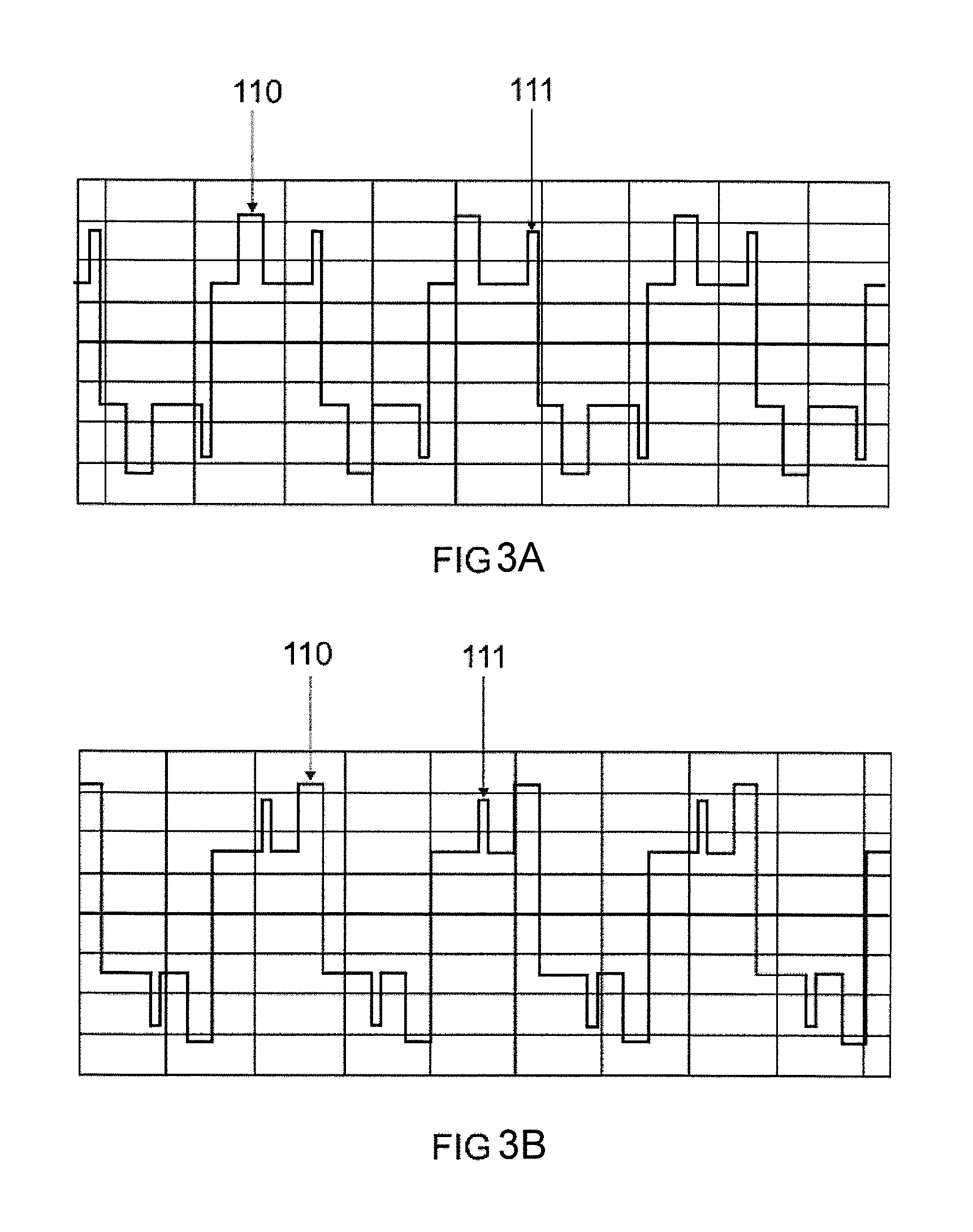Method for operating a high-pressure discharge lamp outside the nominal power range thereof
a discharge lamp and high-pressure technology, applied in the direction of lighting devices, instruments, light sources, etc., can solve the problems of electrodes becoming very hot, disturbing, and stable arc attachment of the discharge arc on the electrode tips
- Summary
- Abstract
- Description
- Claims
- Application Information
AI Technical Summary
Benefits of technology
Problems solved by technology
Method used
Image
Examples
Embodiment Construction
[0035]FIG. 1 shows a simple waveform with a commutation pulse according to the prior art, such as is used for example for LCD projectors (LCD stands for Liquid Crystal Display). Some terms which are necessary for illustrating the invention are defined below with reference to this simple waveform.
[0036]The waveform is subdivided into full cycles and half-cycles, wherein the (average) length of a full cycle is defined as 1 / (fL) and the (average) length of a half-cycle is defined as 1 / (2*fL), wherein fL is the (average) frequency with which the lamp is operated, also called lamp frequency hereinafter. Simple symmetrical waveforms are distinguished by a single constant lamp frequency. The same applies to the length of the half-cycles and full cycles. Complex waveforms consist of half-cycles and full cycles having different lengths, such that for the latter only an average length and thus an average frequency can be specified.
[0037]The waveform has a commutation pulse, already described ...
PUM
 Login to View More
Login to View More Abstract
Description
Claims
Application Information
 Login to View More
Login to View More - R&D
- Intellectual Property
- Life Sciences
- Materials
- Tech Scout
- Unparalleled Data Quality
- Higher Quality Content
- 60% Fewer Hallucinations
Browse by: Latest US Patents, China's latest patents, Technical Efficacy Thesaurus, Application Domain, Technology Topic, Popular Technical Reports.
© 2025 PatSnap. All rights reserved.Legal|Privacy policy|Modern Slavery Act Transparency Statement|Sitemap|About US| Contact US: help@patsnap.com



